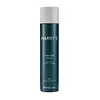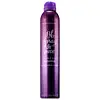What's inside
What's inside
 Benefits
Benefits

 Concerns
Concerns

 Ingredients Side-by-side
Ingredients Side-by-side

Alcohol Denat.
AntimicrobialHydrofluorocarbon 152a
Dimethyl Ether
SolventWater
Skin ConditioningButyl Ester Of Pvm/Ma Copolymer
Va/Butyl Maleate/Isobornyl Acrylate Copolymer
Acetyl Cedrene
Dipropylene Glycol
HumectantCitrus Aurantium Bergamia Fruit Oil
MaskingCitrus Limon Peel Oil
MaskingMyristica Fragrans Kernel Oil
MaskingCitrus Nobilis Peel Oil
MaskingOcimum Basilicum Oil
MaskingMentha Viridis Leaf Oil
AstringentEugenia Caryophyllus Leaf Oil
MaskingRibes Nigrum Seed Oil
EmollientGlycerin
HumectantAminomethyl Propanol
BufferingC12-15 Alkyl Lactate
EmollientDimethyl Stearamine
EmulsifyingPanthenol
Skin ConditioningLimonene
PerfumingLinalool
PerfumingAlcohol Denat., Hydrofluorocarbon 152a, Dimethyl Ether, Water, Butyl Ester Of Pvm/Ma Copolymer, Va/Butyl Maleate/Isobornyl Acrylate Copolymer, Acetyl Cedrene, Dipropylene Glycol, Citrus Aurantium Bergamia Fruit Oil, Citrus Limon Peel Oil, Myristica Fragrans Kernel Oil, Citrus Nobilis Peel Oil, Ocimum Basilicum Oil, Mentha Viridis Leaf Oil, Eugenia Caryophyllus Leaf Oil, Ribes Nigrum Seed Oil, Glycerin, Aminomethyl Propanol, C12-15 Alkyl Lactate, Dimethyl Stearamine, Panthenol, Limonene, Linalool
Alcohol Denat.
AntimicrobialHydrofluorocarbon 152a
Dimethyl Ether
SolventButyl Ester Of Pvm/Ma Copolymer
Water
Skin ConditioningPolyurethane-14
Glycerin
HumectantLactamide Mea
HumectantPanthenol
Skin ConditioningTriethyl Citrate
MaskingBisamino PEG/PPG-41/3 Aminoethyl Pg-Propyl Dimethicone
Octylacrylamide/Acrylates/Butylaminoethyl Methacrylate Copolymer
Amp-Acrylates Copolymer
N-Butyl Alcohol
PerfumingAminomethyl Propanol
BufferingPEG-75 Lanolin
EmollientDipropylene Glycol
HumectantLinalool
PerfumingLimonene
PerfumingBenzyl Salicylate
PerfumingHexyl Cinnamal
PerfumingButylphenyl Methylpropional
PerfumingParfum
MaskingAlcohol Denat., Hydrofluorocarbon 152a, Dimethyl Ether, Butyl Ester Of Pvm/Ma Copolymer, Water, Polyurethane-14, Glycerin, Lactamide Mea, Panthenol, Triethyl Citrate, Bisamino PEG/PPG-41/3 Aminoethyl Pg-Propyl Dimethicone, Octylacrylamide/Acrylates/Butylaminoethyl Methacrylate Copolymer, Amp-Acrylates Copolymer, N-Butyl Alcohol, Aminomethyl Propanol, PEG-75 Lanolin, Dipropylene Glycol, Linalool, Limonene, Benzyl Salicylate, Hexyl Cinnamal, Butylphenyl Methylpropional, Parfum
Ingredients Explained
These ingredients are found in both products.
Ingredients higher up in an ingredient list are typically present in a larger amount.
Alcohol Denat. is an alcohol with a denaturant property. It is created by mixing ethanol with other additives.
This ingredient gets a bad rep because it is irritating and drying - mostly due to its astringent property. Astringents draw out natural oils in tissue, constricting pores and leaving your skin dried out.
However, alcohol denat. is not all that bad.
Due to its low molecular weight, alcohol denat. tends to evaporate quickly. One study on pig skin found half of applied alcohol evaporated in 10 seconds and less than 3% stayed on skin.
This also helps other ingredients become better absorbed upon application.
Studies are conflicted about whether this ingredient causes skin dehydration. One study from 2005 found adding emollients to propanol-based sanitizer decreased skin dryness and irritation. Another study found irritation only occurs if your skin is already damaged.
Small amounts of alcohol are generally tolerated by oily skin or people who live in humid environments.
The rule of thumb is if this alcohol is near the end of an ingredients list, it will probably not affect your skin much.
Also...
This ingredient has antimicrobial and solvent properties.
The antimicrobial property helps preserve products and increase their shelf life. As a solvent, it helps dissolve other ingredients.
Other types of astringent alcohols include:
Learn more about Alcohol Denat.Aminomethyl Propanol is used to adjust the pH of products. It is also used as a base to create other organic compounds. Having a balanced pH is important for protecting your skin.
Aminomethyl propanol is safe to use in cosmetics up to 1%. It is soluble in water.
We don't have a description for Butyl Ester Of Pvm/Ma Copolymer yet.
This ingredient is also known by its brand name, Dymel-A.
It is a colorless gas and often used in aerosols.
Dipropylene Glycol is a synthetically created humectant, stabilizer, and solvent.
This ingredient helps:
Dipropylene glycol is technically an alcohol, but it belongs to the glycol family (often considered part of the ‘good’ alcohols). This means it is hydrating and gentle on skin unlike drying solvent alcohols like denatured alcohol.
As a masking agent, Dipropylene Glycol can be used to cover the smell of other ingredients. However, it does not have a scent.
Studies show Dipropylene Glycol is considered safe to use in skincare.
Learn more about Dipropylene GlycolGlycerin is already naturally found in your skin. It helps moisturize and protect your skin.
A study from 2016 found glycerin to be more effective as a humectant than AHAs and hyaluronic acid.
As a humectant, it helps the skin stay hydrated by pulling moisture to your skin. The low molecular weight of glycerin allows it to pull moisture into the deeper layers of your skin.
Hydrated skin improves your skin barrier; Your skin barrier helps protect against irritants and bacteria.
Glycerin has also been found to have antimicrobial and antiviral properties. Due to these properties, glycerin is often used in wound and burn treatments.
In cosmetics, glycerin is usually derived from plants such as soybean or palm. However, it can also be sourced from animals, such as tallow or animal fat.
This ingredient is organic, colorless, odorless, and non-toxic.
Glycerin is the name for this ingredient in American English. British English uses Glycerol/Glycerine.
Learn more about GlycerinWe don't have a description for Hydrofluorocarbon 152a yet.
Limonene is a fragrance that adds scent and taste to a formulation.
It's found in the peel oil of citrus fruits and other plants such as lavender and eucalyptus. The scent of limonene is generally described as "sweet citrus".
Limonene acts as an antioxidant, meaning it helps neutralize free radicals.
When exposed to air, oxidized limonene may sensitize the skin. Because of this, limonene is often avoided by people with sensitive skin.
The term 'fragrance' is not regulated in many countries. In many cases, it is up to the brand to define this term. For instance, many brands choose to label themselves as "fragrance-free" because they are not using synthetic fragrances. However, their products may still contain ingredients such as essential oils that are considered a fragrance.
Learn more about LimoneneLinalool is a fragrance and helps add scent to products. It's derived from common plants such as cinnamon, mint, citrus, and lavender.
Like Limonene, this ingredient oxidizes when exposed to air. Oxidized linalool can cause allergies and skin sensitivity.
This ingredient has a scent that is floral, spicy tropical, and citrus-like.
Learn more about LinaloolPanthenol is a common ingredient that helps hydrate and soothe the skin. It is found naturally in our skin and hair.
There are two forms of panthenol: D and L.
D-panthenol is also known as dexpanthenol. Most cosmetics use dexpanthenol or a mixture of D and L-panthenol.
Panthenol is famous due to its ability to go deeper into the skin's layers. Using this ingredient has numerous pros (and no cons):
Like hyaluronic acid, panthenol is a humectant. Humectants are able to bind and hold large amounts of water to keep skin hydrated.
This ingredient works well for wound healing. It works by increasing tissue in the wound and helps close open wounds.
Once oxidized, panthenol converts to pantothenic acid. Panthothenic acid is found in all living cells.
This ingredient is also referred to as pro-vitamin B5.
Learn more about PanthenolWater. It's the most common cosmetic ingredient of all. You'll usually see it at the top of ingredient lists, meaning that it makes up the largest part of the product.
So why is it so popular? Water most often acts as a solvent - this means that it helps dissolve other ingredients into the formulation.
You'll also recognize water as that liquid we all need to stay alive. If you see this, drink a glass of water. Stay hydrated!
Learn more about Water